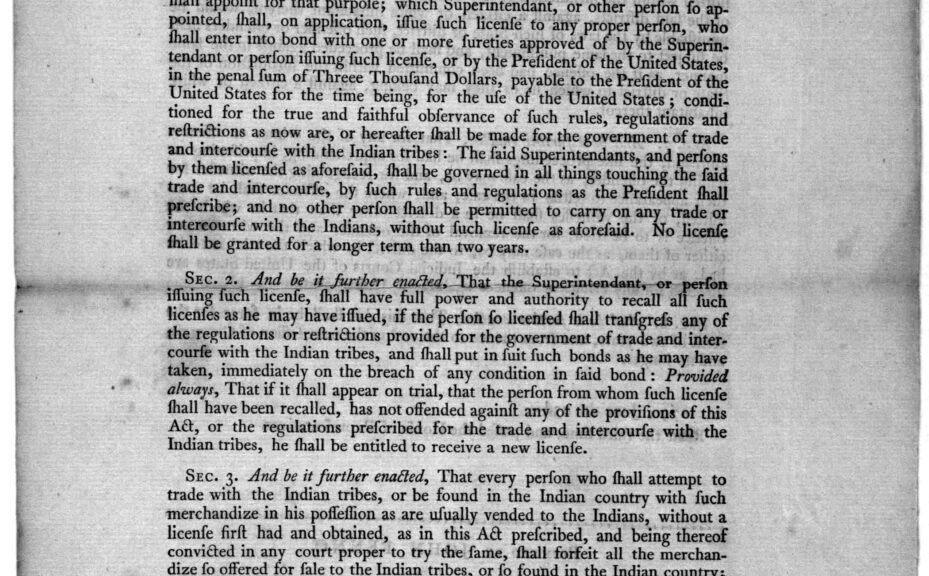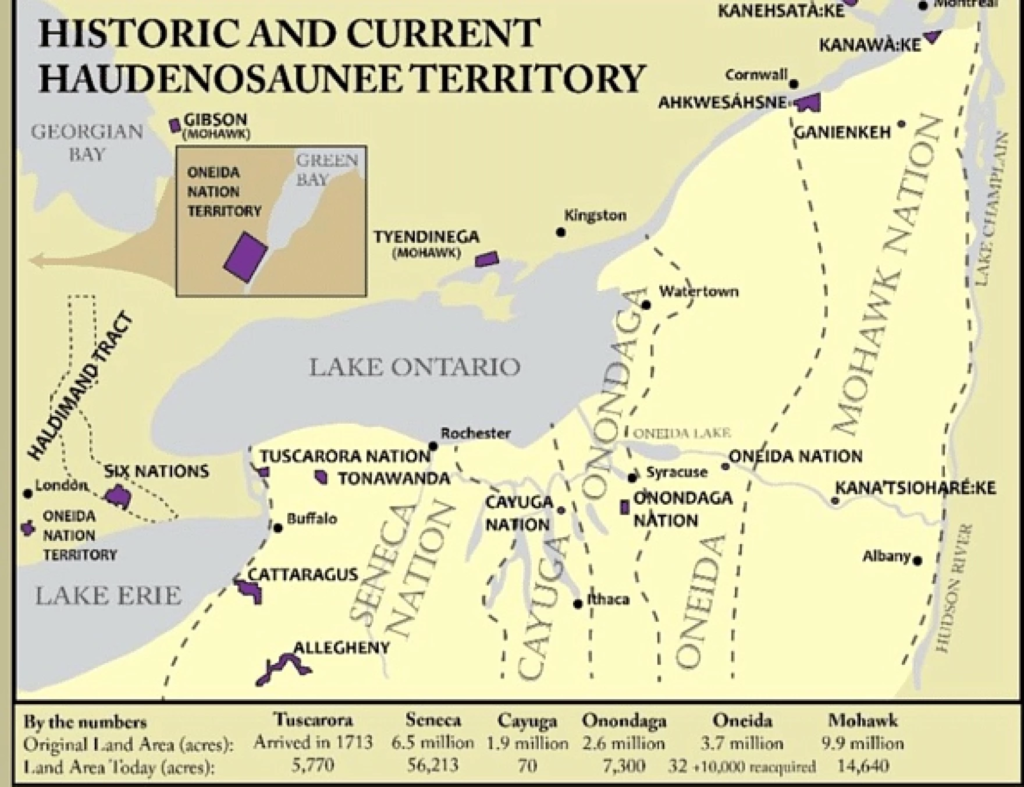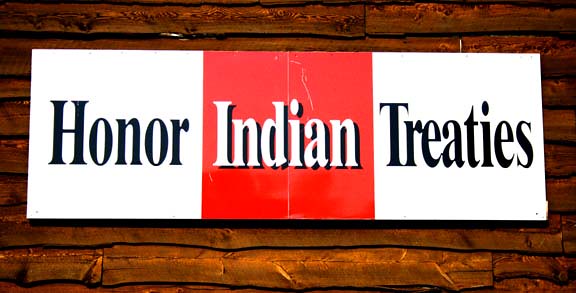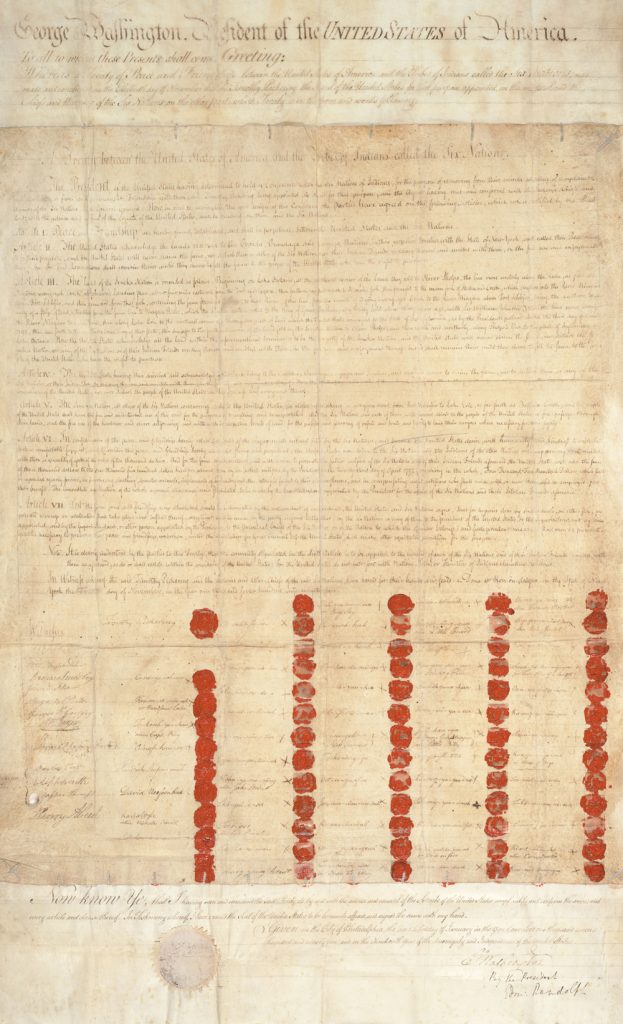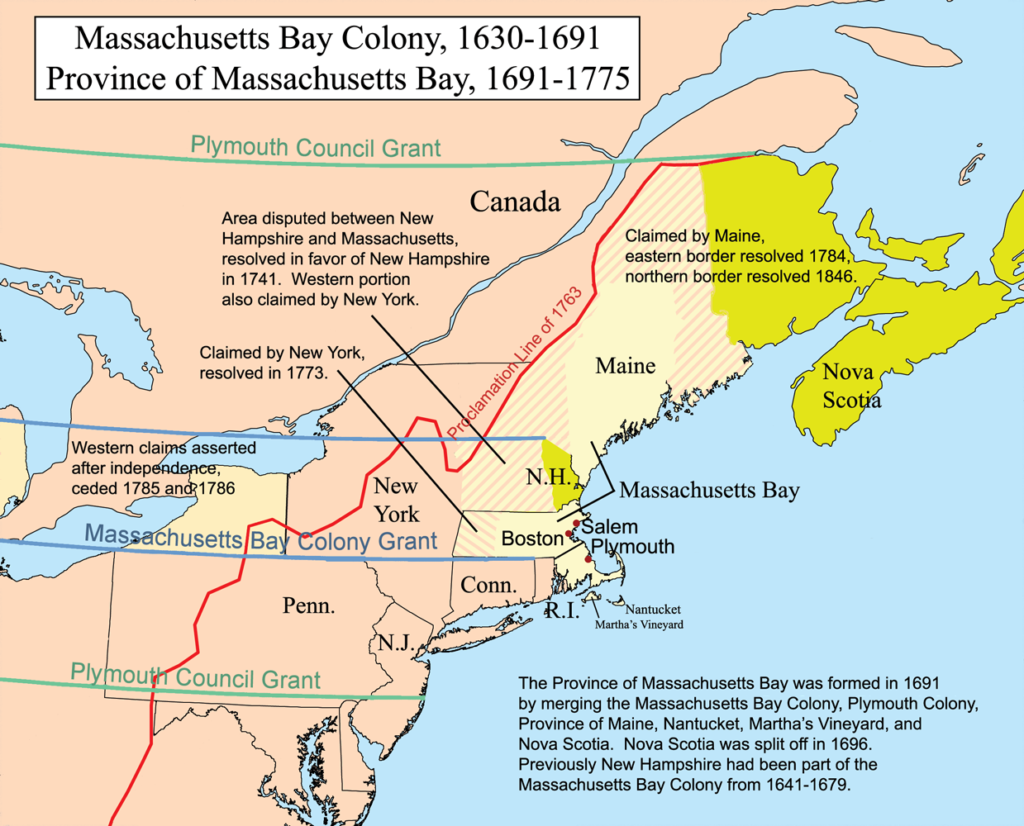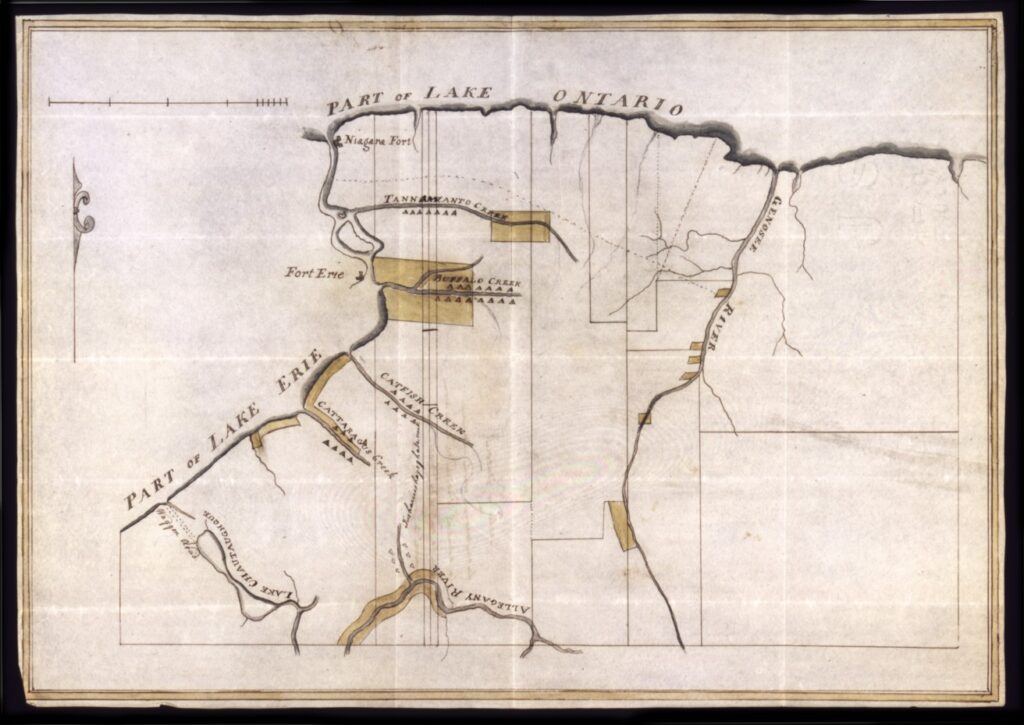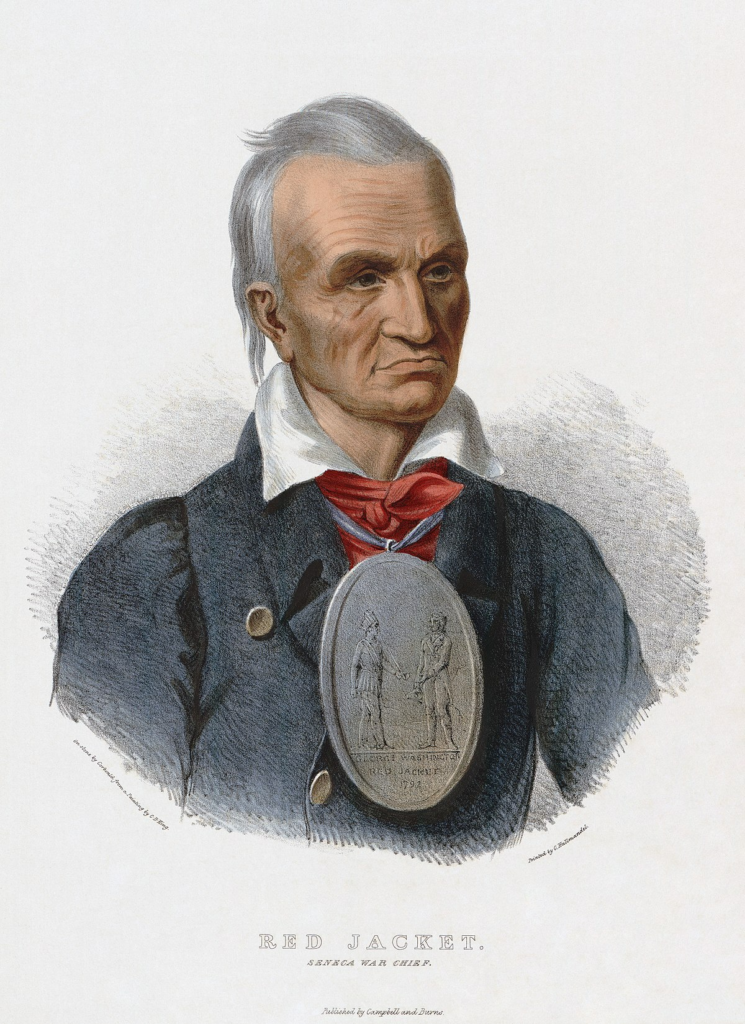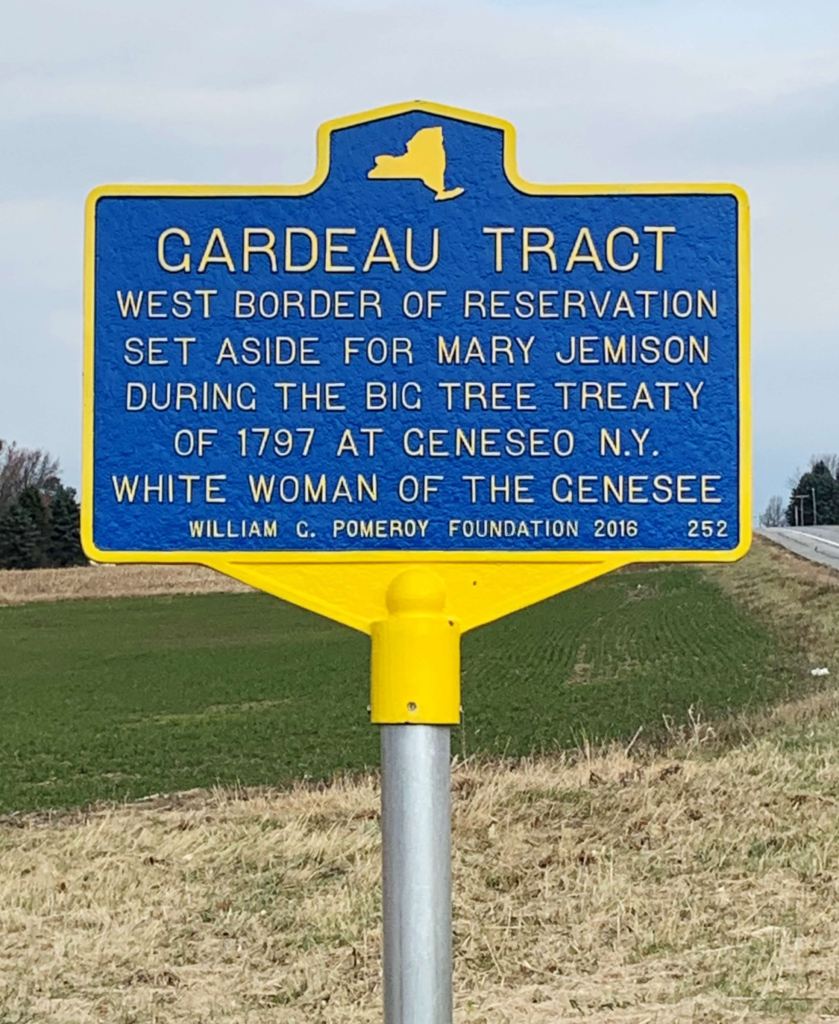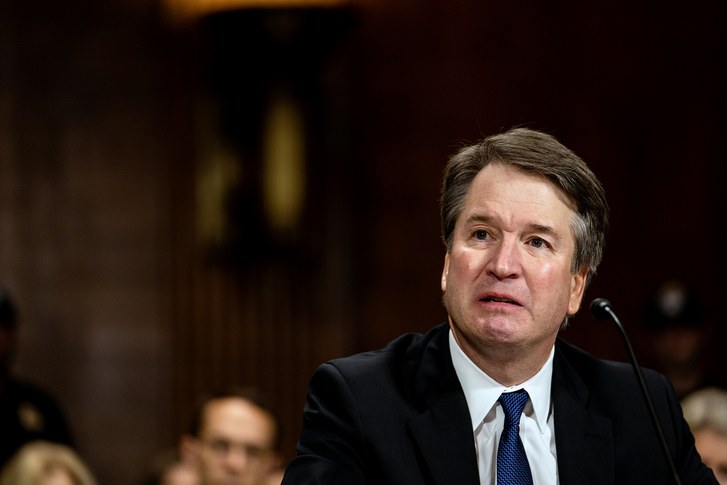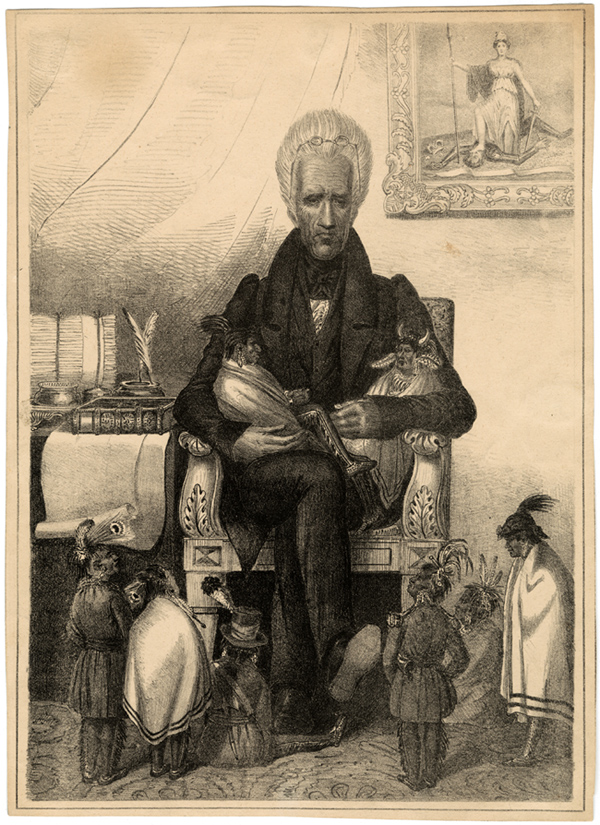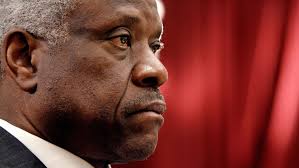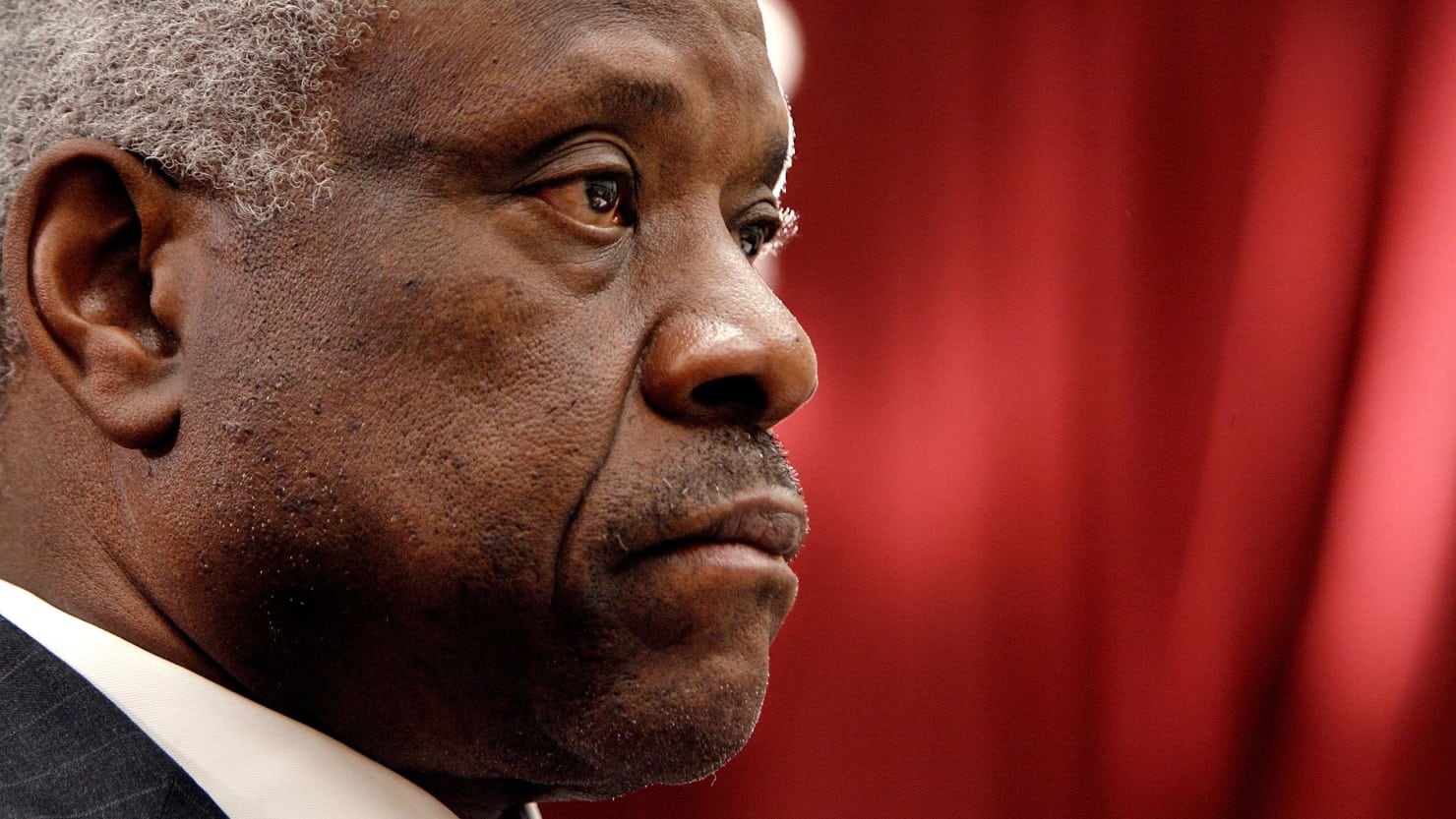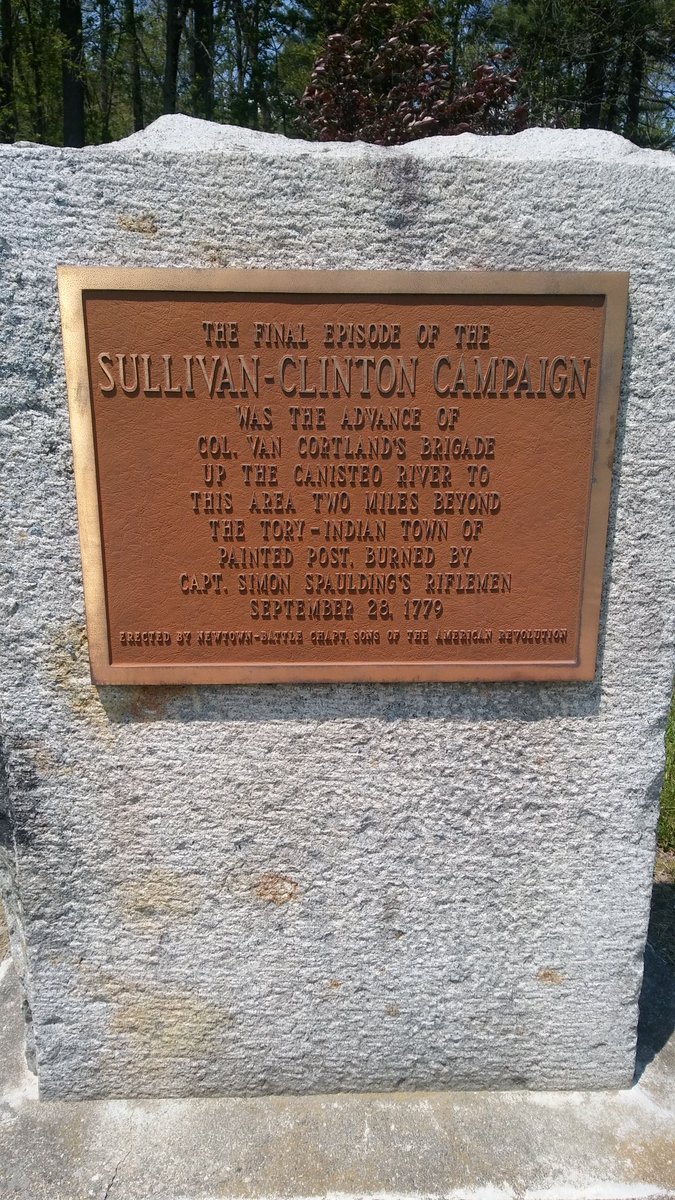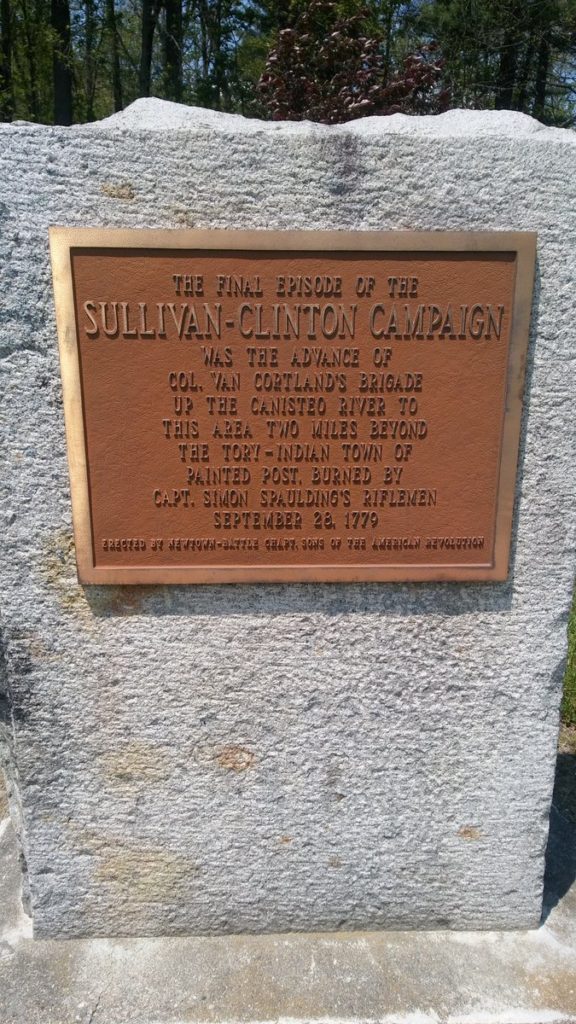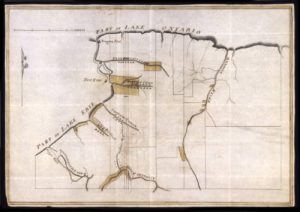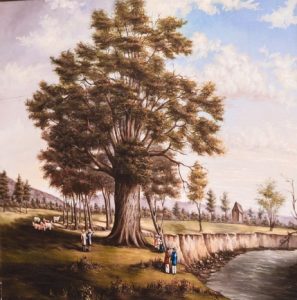Many years ago I worked as a consultant for the United States Department of Justice in the Oneida Land Claim case. My job was simple. The United States had joined the Oneidas in their suit, which asserted that because the State of New York had violated the federal Trade and Intercourse Act, the Oneidas’ sales were null and void. One of the state’s defenses went something like this: “Well, if we purchased the land illegally, we did so because the federal government allowed us to do so. Therefore the United States is responsible.” I worked for many months through all sorts of documents to demonstrate that not only did New York negotiate some of its cessions with the Oneidas in direct defiance of federal authorities, but that in other instances the United States did not learn of Oneida cessions until long after they had taken effect. New York knowingly violated federal laws designed to regulate the cession of Indigenous land.
We should begin with the Articles of Confederation, the first constitution on the United States. Article IX, the longest in the entire document, spells out the powers of the unicameral national legislature the Articles created. With regard to Indian affairs, the Articles of Confederation said that Congress had the power “of regulating the trade and managing all affairs with the Indians, not members of any of the states, provided, that the legislative right of any state within its own limits be not infringed or violated.”
That’s a mouthful. When I teach the Articles of Confederation, I ask my students to think about the phrasing of this item. Which Indians, I ask, are subject to state authority and which are not. I may show them a map so that they can think about the problem geographically. For instance, during the Confederation, the western boundary of Georgia was the Mississippi River. Georgia did not cede its western lands to the United States until 1802. So what about the Indians who lived within what would soon become the state of Alabama before 1802? Georgia claimed that this was their business, and the United States should not interfere. Authorities from the National government could see that Georgia’s aggressive land grabs threatened warfare that the United States could not afford. New York’s history during the Confederation mirrored Georgia’s. We’ve already discussed Massachusetts’ ownership of the right of preemption. Should the Six Nations be considered “members” of the State of New York? They lived within the state’s claimed boundaries, on land claimed by Massachusetts as well, but the state exercised no meaningful authority over them. The point, I try to show my students, is that the language of Article IX was ambiguous and confusing. The limits of federal authority was not clearly drawn. It was confusing at the time. And those states with significant Indigenous populations within their claimed boundaries were aggressive in pursuing Indian policies that threatened to set America’s western boundaries aflame.
So New York, acting on the self-serving assumption that Article IX placed all authority over Indians affairs in the hands of its government, moved to take control of Indigenous land. Congress, for instance, late in 1783 appointed commissioners to negotiate a treaty of peace with the Six Nations. New York state officials questioned the right of the federal commissioners to meet with Indians in the state. The congressional commissioners, New York’s Governor George Clinton wrote, were welcome to meet Indians possessing “territory within the Jurisdiction of the United States,” but the governor demanded “that no agreement be entered into with the Indians, residing within the Jurisdiction of this State (and with whom only I mean to treat) prejudicial to its Rights.” You can read all about this in a document known as the Hough Report.[1]
The state appointed its own Indian commissioners. They raced to Fort Stanwix (present-day Rome, New York,) and arrived ahead of the congressional commissioners.[2] But those Indians who gathered at Fort Stanwix chose not to treat with the state’s commissioners. They would work with the men sent by Congress, and Aaron Hill, of the Mohawks, looked forward to the Six Nations transferring the “ancient covenant” that had existed between the Iroquois and the “Great King” (and not the province of New York) to the newly independent United States (and not to the State of New York).[3] The resulting treaty must have disappointed Hill, for the United States sought to punish the Senecas, Cayugas, Mohawks and Onondagas, all of whom had suffered for holding fast to the Covenant Chain during the Revolution. The Oneidas, who emphasized their contributions to the American war effort, and who downplayed everything else about the war, were secured by the congressional commissioners “in the possession of the lands on which they are settled.”[4]
The power of the United States government under the Confederation was simply inadequate to control locals determined to seize Indian land, and in this sense, New York’s post-revolutionary history differed little from that of the southern states.[5] Half a year after the Fort Stanwix treaty, agents from the state of New York sought to obtain a cession of the Oneidas’ lands. The state’s attempt grew out of a minor land dispute involving a Revolutionary war veteran named John Harper, who had persuaded several Oneidas to sell him twenty-four square miles of territory along the Pennsylvania border. Grasshopper, a principal sachem of the Oneidas, informed Governor Clinton of the unauthorized sale to Harper and asked that the “Writing might be destroyed.”[6] Clinton told the Oneidas that he wished to “perpetuate that Harmony and Friendship between you and us, by preventing Frauds and Impositions which might be attempted to be committed on you by our white people.”[7] The Oneidas, he continued, must decide their course with “dispatch.” He tried to rush them to make a hasty decision.[8]
The Oneidas did not want to be rushed. That is not how Iroquois diplomatic protocol worked. “Petrus the Minister,” almost certainly the great Oneida leader Good Peter, responded to the governor’s address. The United States, he said, had guaranteed the Oneidas in the
possession of their lands. Now he asked the governor to take action to prevent New Yorkers from encroaching on Oneida lands. Settlers at German Flats, for instance, had taken Oneida lands without payment. Good Peter now “was willing to lease one tier of Farms in the manner they are done by the White People, along the Boundary Line throughout the extent of our Country, and that People of Influence might be settled on those Farms to prevent Encroachments, and that a person might be appointed to collect our Rents annually.” Good Peter wanted friendship, and he was willing to lease a small tract if doing so formed a buffer that could protect the Oneida heartland from further encroachment.[9]
Governor Clinton was not willing to accept these terms. In fact, he seems to have been furious. Clinton could not tolerate having an Indian community as a landlord. The Oneidas had believed that they were meeting with the state to brighten the chains of friendship that existed between them, but not to sell their lands. Clinton told the Oneidas that he felt betrayed. The Oneidas, out of a desire to placate the angry governor, then expressed a willingness to sell lands along a “line from the Mouth of the Unadilla River with a direct course to the Chenango River and so down the same.” Peter cautioned the governor. His offer had been premised more upon a desire to preserve “Friendship, than out of a pecuniary reward, and that they could not part with more.”[10] He did not want the governor to misunderstand the Oneidas’ motives. Clinton still was unhappy. He continued to press for a further cession. The Oneidas, through the terms of the resulting Fort Herkimer treaty, reluctantly sold to the state 200,000 acres for $11,500.[11]
The key point is that during the era in which the Articles of Confederation served as the governing instrument of the United States, national authority over the subject of Indian affairs was phrased in ambiguous terms. Given the weakness of Congress, the states of Georgia, North Carolina, “Franklin”, and New York pursued their own independent Indian policies. For the Oneidas, the 1785 agreement at Fort Herkimer was only the beginning.
We need to halt for a second before we go further. According to the State’s own records, Good Peter wanted to “lease” Oneida lands rather than sell them outright. We know, however, that he did not say that. He spoke in Oneida. The missionary Samuel Kirkland translated and recorded what he said. Good Peter said something and Kirkland racked his brain and decided that the best term available was “lease.” But think back to what we have said about the Senecas. They were willing to share vast expanses of their land with white settlers while keeping exclusive control of other tracts. I would argue that Good Peter wanted to do something similar. It would be a wonderful enterprise for experts in Haudenosaunee languages to take what their ancestors said in 1784, 1785, 1788 and so on, and “untranslate” their speeches back into their original languages. Then, these Indigenous language keepers can attempt to arrive at a richer understanding of what was said. I will bet you that “lease” is an insufficient term for getting inside what Good Peter and the Oneidas wanted.
This Brings us to 1788
It seems reasonably fair to conclude that by 1788, the year in which he met with the Onondagas and Oneidas in New York’s Indian territory, Governor Clinton recognized that he presided over a state only nominally under his control. British troops continued to garrison forts at Oswego and Niagara, despite the provisions of the Treaty of Paris that had formally ended the Revolutionary War in 1783. These soldiers would not leave New York until 1795. During the war, two of the eastern counties of the state and part of a third seceded, becoming in the process the independent republic of Vermont. Talk of other parts of the state breaking away occurred commonly enough for James Duane, a prominent New York politician, to fear that west of the Hudson “a second Vermont may spring up.”[12] Though the punitive Treaty of Fort Stanwix extinguished Iroquois claims to lands largely to the west of New York, much of the territory in the Empire State remained firmly in Indian hands. Clinton needed those lands for his state. Thus Clinton and his colleagues pursued a three-fold program: They hoped to eliminate “any claim of the United States Congress to sovereignty over Indian affairs in the State of New York,” historian Barbara Graymont wrote; they wanted to extinguish “the title of the Indians to the soil”; and they were determined to eradicate the sovereign status of the Six Nations.[13]
Doing so would not be an easy task, for as we have seen New York State was not alone in trying to acquire the lands of the Six Nations. Massachusetts claimed much of the land in what is now New York owing to its colonial charter, which specified no western boundary to its territorial limits. The two states had worked out a compromise at Hartford late in 1786, with the result that New York exercised legal jurisdiction over the lands in question, but the Bay State retained the right of preemption, or first purchase, to Indian lands in upstate New York. Massachusetts promptly sold these preemption rights to two speculators, Oliver Phelps and Nathaniel Gorham who, in July of 1788, concluded a treaty with the refugee Mohawks, Oneidas, Onondagas, Cayugas and Senecas at Buffalo Creek. Phelps and Gorham acquired nearly 2.6 million acres of Iroquois land in western New York for five thousand dollars and the payment of an annuity to the Indians of five hundred dollars.[14]
In addition to the problems posed by the Phelps-Gorham purchase, Clinton and his associates worried about the activities of the New York Genesee Company of Adventurers, a wealthy and influential group of land barons led by John Livingston. On the 13th of November, 1787, the Livingston Company negotiated a lease with “the Chiefs and Sachems of the Six Nations of Indians.” The sachems “leased” to the Livingston Company, for a term of 999 years, “all that certain Tract or Parcel of Land, commonly called and known by the Name of the Lands of the six Nations of Indians, situate, lying and being in the State of New York, and now in the actual possession of the said Chiefs and Sachems of the Six Nations.” Livingston and his associates agreed to pay to the sachems “the yearly Rent or Sum of Two Thousand Spanish Milled Dollars, in and upon the fourth Day of July.” Two months later, the Company negotiated an additional lease with the Oneidas, “for the said term of nine hundred and ninety-nine years, on a rent reserved for the first year of twelve hundred dollars per annum, until it shall amount to fifteen hundred dollars, of all those lands in the said writing described, as the Tract of Land commonly called and known by the Territory of the Oneida Indians.”[15]
Early in 1788, Governor Clinton and his associates in the State Assembly and Senate undertook a concerted campaign to consolidate their control over the conduct of Indian policy in New York and the disposition of those lands the Iroquois could be persuaded to part with. Clinton and other New Yorkers wanted to acquire Iroquois lands for the settlement of the state’s obligations to its revolutionary war veterans. Without question paying off the state’s obligations to its soldiers was important to Clinton, but as historian Laurence Hauptman has shown, other factors were important as well. The consolidation of state control over its western lands, the development of the state’s economy, and the construction of a state wide transportation system all relied upon New Yorkers first acquiring title to Iroquois lands. The Six Nations, and the Oneidas in particular, were in the way.[16]
Early in 1788 the New York State Assembly invalidated the Genesee Company of Adventurers’ “leases” of Six Nations land. According to a joint resolution approved by the State Senate and Assembly, the leases, by their terms, were for all intents and purposes “purchases of lands, and . . . by the constitution of this State, the said leases are not binding on the said Indians, and are not valid.” They determined that “the force of the State, shall from time to time, as occasion may require, be exerted to prevent intrusions on and for preserving to the people of this state, their rights to the lands and territories comprehended within the boundaries specified in the said leases.”[17]
To prevent problems like that presented by the Genesee Company of Adventurers for the future, the Assembly and Senate on the 26th of February enacted a law “for directing the manner of proving deeds and conveyances to be recorded.” For a purchase of lands to be valid under New York state law, that purchase must be witnessed and recorded and proved “by one or more of the subscribing witnesses to the same, before one of the justices of the supreme court, or a master in chancery, or one of the judges of the court of common pleas in and for the county where such lands and real estate are situated.” Through this enactment, the state tightened its control over the procedures through which land changed hands.[18] Furthermore, the Legislature on the 18th of March approved a law “to punish infractions of that article of the Constitution of this State, prohibiting purchases of lands from the Indians, without the authority and consent of the legislature; and more effectually to provide against intrusions on the unappropriated lands of this State.” No purchases of land from Indians, “within the limits of this State, shall be binding on the said Indians, or deemed valid, unless made under the authority, and with the consent of the Legislature of this State.” Any person who acted without the permission of the Legislature would pay a fine of 100 pounds to the people of New York, “and shall be further punished by fine and imprisonment in the discretion of the court.”[19]
After taking these steps to ensure that no unauthorized parties acquired Indian lands within the state, and after depriving the New York Genesee Company of its ill-gotten gains, Clinton and his allies in the Legislature appointed commissioners to negotiate treaties with the Six Nations. There is no evidence that the Iroquois knew that the New York State Legislature had invalidated the Livingston Leases and nothing Clinton or the state commissioners told the Onondagas and Oneidas in the summer of 1788 could have led them to that conclusion. Indeed, the governor and the state’s Indian commissioners continuously warned the Indians that their lands remained in jeopardy unless they negotiated with the state.[20] The governor accompanied the state commissioners to Fort Schuyler, formerly Fort Stanwix, where they would meet with as many Indians as could be gathered. The Six Nations, the governor hoped, would “open their ears to the voice of the Great Council of the State of New York,” and meet them to “brighten the Chain and renew the Covenant which had so long bound us together.” Clinton and the commissioners informed the Iroquois that they intended to protect the Indians from the many outside forces that clamored for their land. Deceptively, the governor and the commissioners hoped to exploit the confusion then reigning in Iroquoia, and obtain from the Six Nations an enormous cession of Indian lands.[21]
Governor Clinton appears to have wanted to move quickly. Once again, as in 1785, he attempted to rush the proceedings. He informed the Onondaga sachems, for instance, that “the other public business of the State will not permit me to remain long from home and it will therefore be necessary for such of your people as propose to bee at the Treaty to come on with all possible haste or they may be too late.”[22] Though there is no evidence that the Iroquois sachems clearly recognized, understood, or cared about the nature of that “public business,” Clinton indeed had plenty to worry about. New Yorkers overwhelmingly had opposed the new Federal Constitution drawn up at the convention held in Philadelphia in the summer of 1787, and the governor (albeit quietly) led the “Antifederalist” forces within his state. Advocates of a stronger national government felt the need to replace the Articles of Confederation for a number of reasons, but the “father of the Constitution,” James Madison, listed high on his list of “Vices of the Political System of the United States” the aggressive Indian policies pursued by several of the states, including New York. Article I, Section 8, of the new Constitution replaced the vague and ambiguous language of Article IX of the Articles of Confederation, with an assertive statement of federal authority over the conduct of Indian affairs: once the Constitution became the “supreme law of the land,” Congress would possess the exclusive authority “to regulate Commerce with foreign Nations, and among the several States, and with the Indian Tribes.”[23]
New Yorkers had ratified the new constitution, reluctantly, in July, only a few short months before the gathering at Fort Schuyler. When word of the Constitution’s ratification in New Hampshire and Virginia arrived earlier that month, the Antifederalists of New York realized that they no longer could safely oppose the Constitution: the United States would exist under a new and more powerful frame of government. The question posed to the delegates at Poughkeepsie was now no longer whether or not New Yorkers would approve the Constitution, but whether or not they would become a member of the Union now that the requisite number of states had ratified. Complete independence was never considered by New York’s Antifederalists, who recognized that they would soon have to work within the new federal system. Governor Clinton must have felt the need to acquire for New York as much of the Iroquois estate as he could before the new government went into effect, and the rules of Indian diplomacy changed.[24]
New York’s urgent appeal to the Six Nations was received by a people still recovering from the ravages of the Revolutionary War. Although the Oneidas suffered comparatively less than their brothers in the Confederacy, they may have been confused or concerned about Governor Clinton’s intentions. Certainly representatives of the Genesee Company of Adventurers tried to disrupt the proceedings at Fort Schuyler. A Seneca named Onyegat told New York’s Indian commissioners that men from the Genesee Company had told him that “the Governor’s Business at this proposed Treaty is to purchase your Lands, but you have leased them to us. He means to pay you all at once for them, and then in a few Years to drive you off and tell you that you have no Property here.”[25] A Frenchman named Dominique Debarges, a fur trader from Montreal and a Genesee Company agent, along with an Indian named “the Infant,” told sachems on their way to Fort Schuyler that “it will be your Destruction if you go down to the Treaty called by the Governor of New York. I know his intentions,” Debarges continued, and “when you return you’ll have no Place to set your Foot on. You will be like wild beasts which are hunted.” Debarges also told the Indians that “the Governor had his troops collected at German Flatts, ready to fall upon them as soon as they returned.”[26] The Oneidas, as well as the Onondagas, likely heard these rumors; the evidence suggests that the constituent members of the Confederacy regularly shared information and intelligence.[27] That the missionary Samuel Kirkland served as an interpreter at Fort Schuyler could only have further confused the Indians attending the council. The minister and missionary had served as an interpreter at the federal Fort Stanwix Treaty in 1784, and his presence at Fort Schuyler may have done much to grant a veneer of legitimacy to Clinton’s efforts and supported the Governor’s contested claim to represent the only jurisdiction with a legitimate right to negotiate with the Six Nations.[28]
The state commissioners chose to treat with the Onondagas first. The Oneidas returned home, and would not return to Fort Schuyler until the meeting with the Onondagas had been completed. If you are interested in the dispossession of the Onondagas, you can read the article I published a while back in the journal New York History. By the middle of September, that business was finished, and the Oneidas returned to the fort.
Speaking through Kirkland, the Oneida spokesman Good Peter responded to the Commissioners’ invitation.[29] He expressed to the Governor and the state’s men his understanding of the purpose of the gathering. Good Peter wanted to protect the Oneidas’ lands. He made clear to Governor Clinton that “in whatever Land we should cede to you, our Warriors should have the Privilege of Hunting and Fishing, and that a Line should be drawn round the Part we should reserve to ourselves to secure it to us and our Posterity.” In essence, Good Peter, like the Onondaga sachem Black Cap, and like the Senecas at Big Tree, offered to share the bulk of the Oneidas’ lands with the citizens of the state of New York in return for an annual payment. The remainder of their lands the tribe would keep for their own exclusive use.[30]
Governor Clinton told the Oneidas that he desired to protect their lands from the Livingston Adventurers, who “had without any Authority from us, obtained from you a Lease of your Lands.” He had, he said, no interest in buying lands from the Oneidas, for “we have already more lands than we have People to settle on them.” His hope was to set things right, “to meet you at this Council Fire, and by a new agreement place Matters on such a footing as to prevent these Things for the future.”[31] This pleased Good Peter, who responded to the Governor’s speech on the 20th of September. He was happy to hear that the state did not want the Oneidas’ land, and that New York would protect his people from the Livingston Company. “The Wind,” he told Clinton, “seems always to blow and shake this beloved Tree, this Tree of Peace.” Good Peter recalled that in 1784 “the United States” had “Planted the Tree of Peace with four Roots, spreading branches, and beautiful leaves, whose top reached the Heavens.” He feared “that by and by some Twig of this beautiful Tree will be broken off. I Love this Tree of Peace as my Life, and my Protection. I know you love it.” To preserve this peace, Good Peter concluded, the Governor must “punish these disorderly People.”[32]
The point is simple. Throughout his speeches at Fort Schuyler that September, and consistently in his recollections of the treaty four years later, Good Peter believed whole-heartedly that the Oneidas had met with the governor and the state’s Indian commissioners to protect his people from dispossession by the Livingston Company. Indeed, at the close of the council, Good Peter proudly announced to Governor Clinton that “My Nation are now restored to a possession of their Property which they were in danger of having lost.” The 1788 Oneida treaty, Good Peter continued, secured to the Oneidas “so much of our Property which would otherwise have been lost.” Clearly Good Peter would have had no reason to make this statement if he knew, prior to the meeting at Fort Schuyler, that the Livingston leases had been invalidated by the State Legislature.[33]
The 1788 transactions show the determination of Governor Clinton and the State’s appointed Indian Commissioners to acquire Onondaga and Oneida lands. As a result of the treaties with the Onondagas and Oneidas, as interpreted by the state, New York could finally begin the long-delayed process of distributing bounty lands to its veterans.[34] During the Oneida land claim litigation, one of New York’s expert witnesses argued that in 1788 the Oneidas and Onondagas willingly ceded to the state all their lands in 1788, and that “New York State then granted back to each tribe a portion of the lands ceded.”] In this logic, New York “created” the reservations, and that therefore the state possessed some nebulous right to extinguish the Indians’ title to these lands. The problem is that this truly unprecedented argument is entirely unsupported by any reliable evidence. At Fort Schuyler, for instance, the Oneida spokesman Good Peter expressed his happiness about the Onondagas’ treaty, “and that Part of their Country which they have reserved to themselves is secured to them.” Good Peter, we should remember, told Clinton as well that the Oneidas would retain hunting and fishing rights in whatever lands they ceded to the state, and that “a Line should be drawn round the Part we should reserve to ourselves.”[36] Clearly, in Good Peter’s view, it is the Onondagas who are doing the reserving, allowing the state to share with them a large portion of their lands in return for an annual payment and keeping the rest exclusively for themselves. The Oneidas appear to have wanted to lease their lands, not sell them, and to reap from landlordism what they could no longer acquire through trade. The Onondagas, Clinton told the Oneidas, did “cede to us all their Lands, reserving to themselves a convenient Tract for their own Use and Habitation, where none of our People should come to settle.”[37]
We will continue the story of the Oneidas’ dispossession next week.
[1] Governor George Clinton to Richard Butler and Arthur Lee, 13 August 1784, Hough, ed., Proceedings, 21.
[2] William N. Fenton, The Great Law and the Longhouse: A Political History of the Iroquois Confederacy, (Norman: University of Oklahoma Press, 1998), 609.
[3] Henry S. Manley, The Treaty of Fort Stanwix, 1784, (Rome, NY, 1932), 88; Tiro, “People of the Standing Stone,” 146; Laurence Hauptman, Conspiracy of Interests: Iroquois Dispossession and the Rise of New York State, (Syracuse, 1999), 28; Graymont, Iroquois and the American Revolution, 272.
[4] Kappler, comp, Indian Affairs, Treaties and Laws, 5-6.
[5] Hauptman, Conspiracy of Interests, 27.
[6] Hough, ed., Proceedings, 73.
[7] Clinton’s Speech to the Oneidas, 23 June 1785, Hough, ed., Proceedings, 86.
[8] Ibid., 87.
[9] Ibid., 92-93.
[10] Ibid., 102-103.
[11] Ibid., 107; J. David Lehman, “The End of the Iroquois Mystique: The Oneida Land Cession Treaties of the 1780s,” William and Mary Quarterly, 3d ser., 47 (1990), 536-538.
[12] Duane quoted in Lehman, “Iroquois Mystique,” 523. See also Alexander, Revolutionary Conservative, 64.
[13] Barbara Graymont, “New York Indian Policy After the Revolution,” New York History, 58 (1976), 440.
[14] The “Agreement Between the Commissioners of the Commonwealth of Massachusetts and the Commissioners of the State of New York, 16 December 1786,” is housed in the New York State Archives in Albany; Notebook containing Copies of Deeds from the Five Nations to Oliver Phelps and Nathaniel Gorham, New York State Library, Albany, NY, Manuscripts, 11274; Christopher Densmore, Red Jacket: Iroquois Diplomat and Orator, (Syracuse, NY, 1999), 24-25. A copy of the Hartford Compact can be found as well in the Report of the Special Committee to Investigate the Indian Problem of the State of New York, Appointed by the New York State Assembly, 1888, Assembly Document 51, (Albany, 1889), 105 (Hereafter cited as Whipple Report).
[15] Journal of an Assembly of the State of New York, at their Eleventh Session, Begun and Holden at Poughkeepsie in Dutchess County, the Ninth Day of January, 1787, (New York, 1788), 56. Hough has different figures, and I am not certain how best to account for the discrepancy. Of the Oneida lease, Hough says that the “lands were leased for a term of nine hundred and ninety-nine years, for a rent of $1000 for the first ten years, and increasing after that time at the Rate of $100 annually until the Sum amounted to $1500, which was to remain the Rent afterwards.” See Hough, ed., Proceedings, 123n.
[16] Hauptman, Conspiracy of Interests, Part One.
[17] Assembly Journal, Eleventh Session, p. 74. Journal of the Senate of the State of New York, at their Eleventh Session, Begun and Holden at Poughkeepsie in Dutchess County the eleventh day of January, 1788, (Poughkeepsie, NY, 1788), 35.
[18] “An Act for Directing the Manner of Proving Deeds and Conveyances to be Recorded,” 26 February 1788, New York Session Laws, Eleventh Session, Chapter 44, p. 689.
[19] New York Session Laws, Eleventh Session, Chapter 85, p. 810-811; Assembly Journal, 11th Session, 106, 109, 121; Senate Journal, 11th Session, 57-59, 63, 68.
[20] Governor Clinton told the Onondagas, for instance, that it was wrong for them to have entered into a lease agreement with the Livingston Company. The Livingson Company, he warned, “have promised you Money and a yearly Rent. If they refuse to pay you, how are you to compel them to it? It is not reasonable to expect that the State will interfere in your behalf in a Business conducted against their Will. Those people who settled upon your Lands, they will soon become too strong for you, and if you should go to War with them, their Scalps will neither cloath nor feed you.” See Hough, Proceedings, 185.
[21] Assembly Journal, 11th Session, 89; Senate Journal, 11th Session, 50; “Proceedings of the Commissioners Appointed by the State of New York to Hold Treaties with the Indians within that State, Under Statute Passed on 1 March 1788,” mss., Albany Institute of History and Art, Albany, NY; Lehman, “Iroquois Mystique,” 541; Laurence M. Hauptman, “New York State’s Assault on the Oneida Tribal Estate: The 1780s,” Paper Presented at the Oneida Historical Conference, Syracuse, New York, June 2002), 8-9, 12; Jack Campisi, “The Oneida Treaty Period, 1783-1838,” in The Oneida Indian Experience: Two Perspectives, (Syracuse, NY, 1988), 53.
[22] “Proceedings of the Commissioners,” 54.
[23] James Madison, quoted in Jack P. Greene, ed., Colonies to Nation, 1763-1789: A Documentary History of the American Revolution,(New York, 1967), 514.
[24] For the Antifederalists in New York state, please see Edward Countryman, A People in Revolution: The American Revolution and Political Society in New York, 1760-1790, (Baltimore, 1981), 273-276; Jackson Turner Main, The Anti-Federalists: Critics of the Constitution, 1781-1788, (Chapel Hill, NC, 1961), 233-242; Steven R. Boyd, The Politics of Opposition: Antifederalists and the Acceptance of the Constitution, (Millwood, NY, 1979), 131-134; John P. Kaminski, George Clinton: Yeoman Politician of the New Republic, (Madison, WI, 1993), 135-138, 152-166. We must take seriously the grounds of Antifederalist discontent with the new federal Constitution. New York’s Antifederalists, in particular, feared that the new national government created by the Constitution would be too large, and that it would destroy the vital protections of the citizens’ interests that existed in a truly representative government. Though the National government never became the leviathan that the Antifederalists feared, those fears were real, as numerous historians have pointed out, and we as historians ought to take them seriously. In an interesting discussion of New York’s response to the Nullification Crisis of 1832, historian Saul Cornell argued that while the state rejected South Carolina’s controversial and dangerous position, New Yorkers defended their “own commitment to states’ rights federalism grounded in the tradition of dissent that evolved between 1788 and 1828.” See Cornell, The Other Founders: Anti-federalism and the Dissenting Tradition in America, 1788-1828, (Chapel Hill, 1999), 298-302.
[25] Hough, ed., Proceedings, 182-183.
[26] Ibid., 191-192.
[27] A number of recent works on the Iroquois emphasize the importance of the contacts between the constituent communities of the Six Nations. See Richter, Ordeal of the Longhouse, passim., for an example of this phenomenon during the colonial period, and Tiro, “People of the Standing Stone” for the revolutionary era.
[28] My understanding of Kirkland’s role as an interpreter has been influenced by Karim Tiro’s fine article, “James Dean in Iroquoia,” New York History, 80 (October 1999), 391-422. Tiro argues that Dean’s employment by different agencies “contributed to the atmosphere of confusion and uncertainty surrounding the land deals—a situation that ultimately made it more difficult for Natives to resist dispossession.” (quote on p. 415). A similar process seems to have been at work with Kirkland’s involvement in numerous treaties. On Kirkland as a land speculator and for his agency in Iroquois dispossession, see Hauptman, Conspiracy of Interests, 37-45, 70-72.
[29] In the opinion of historian Laurence Hauptman, the leading expert on Iroquois history in New York State, the principled and devout Kirkland of the pre-Revolutionary period had by 1788 “compromised his principles under the pressures of family and mission financial exigencies and under his all-consuming passion to create the Hamilton-Oneida Academy.” See Hauptman, “Command Performance,” 44.
[30] Hough, ed., Proceedings, 221. After the Onondagas had completed negotiating their treaty with the state of New York, a treaty they appeared to have viewed as something akin to a joint-use agreement, Black Cap thanked Governor Clinton for helping his people hang on to their lands. “You have now secured to us,” Black Cap told the Governor, “what we consider as a territory sufficiently large for us and all our Posterity to live upon, and every Privilege arising from our whole Territory we enjoy and shall continue to enjoy.” Black Cap believed that the land still belonged to the Onondagas, and that the written treaty formally stated this. See Hough, ed., Proceedings, 204-205.
[31] Ibid., 223-224.
[32] Ibid., 228-229.
[33] Ibid., 235. See also Lehman, “Iroquois Mystique,” 544 and Anthony Wonderly, “’Good Peter’s Narrative of Several Transactions Respecting Indian Lands’: An Oneida View of Dispossession,” New York History, 84 (Summer 2003), 237-276.
[34] Ruth L. Higgins, Expansion in New York, with Especial Reference to the Eighteenth Century, reprint, ed., (Philadelphia, 1976), 106.
[36] Hough, ed., Proceedings, 221 (emphasis added).
[37] Ibid., 225 (emphasis added).

